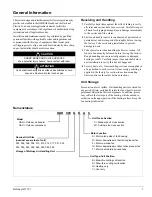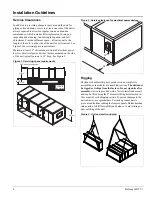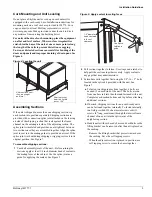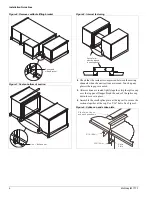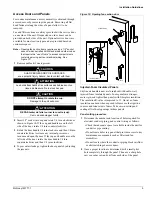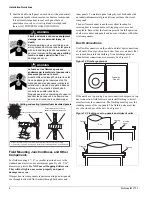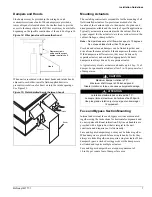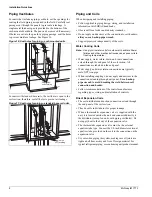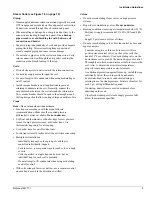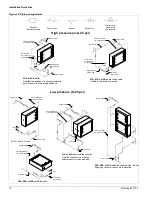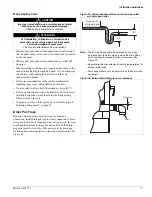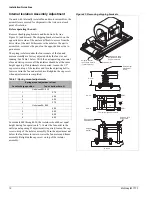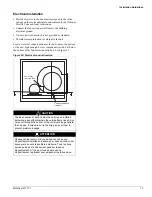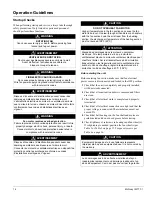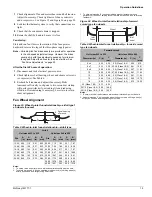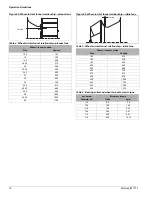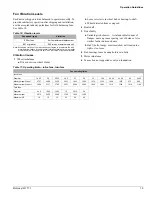
8
McQuay IM 777-1
Installation Guidelines
Piping Vestibules
For units that include a piping vestibule, cut the openings for
routing the field piping as required in the field. Carefully seal
passages cut through the panels to prevent air leakage. A
single metal thickness pan is provided in the bottom of the
curb-mounted vestibule. The pan can be removed if necessary.
If holes are cut into the pan for a piping passage, seal the holes
to prevent moisture leakage. See Figure 16.
Figure 16: Seal holes for piping—curb mounted units
For units with standard base rails, the vestibule is open to the
coil section; therefore, seal all holes to prevent air leakage.
Figure 17: Seal holes for piping—standard base rail units
Piping and Coils
When designing and installing piping:
•
Follow applicable piping design, sizing, and installation
information in ASHRAE handbooks.
•
Observe all local codes and industry standards.
•
Do not apply undue stress at the connection to coil headers;
always use a backup pipe wrench
.
•
Support pipework independently of the coils.
Water Cooling Coils
Note –
Use glycol in water coils for outdoor air handlers. Power
failures and other mechanical issues can expose coils to
freezing temperatures.
•
Water supply, water return, drain, and vent connections
extend through the end panel of the coil section. All
connections are labeled on the end panel.
•
Water supply and water return connections are typically
male NPT iron pipe.
•
When installing couplings, do not apply undue stress to the
connection extending through unit panel.
Use a backup
pipe wrench to avoid breaking the weld between coil
connection and header.
•
Follow recommendations of the control manufacturer
regarding types, sizing, and installation of controls.
Direct Expansion Coils
•
The coil distributor and suction connection extend through
the end panel of the coil section.
•
Check nozzle in distributor for proper tonnage.
•
When a thermostatic expansion valve is supplied with the
unit, it is located outside the unit and connected directly to
the distributor (except on units with piping vestibules). Do
not apply heat to the body of the expansion valve.
•
The thermostatic expansion valve must be the external
equalizer tube type. Connect the 1/4-inch diameter external
equalizer tube provided on the coil to the connection on the
expansion valve.
•
Use care when piping the system, making sure all joints are
tight and all lines are dry and free of foreign material. For
typical refrigerant piping, see condensing unit product manual.
Seal holes
cut for piping
Seal holes
cut for piping
Summary of Contents for Skyline IM 777-1
Page 32: ...30 McQuay IM 777 1...
Page 33: ...McQuay IM 777 1 31...
Page 34: ...32 McQuay IM 777 1...
Page 35: ......



